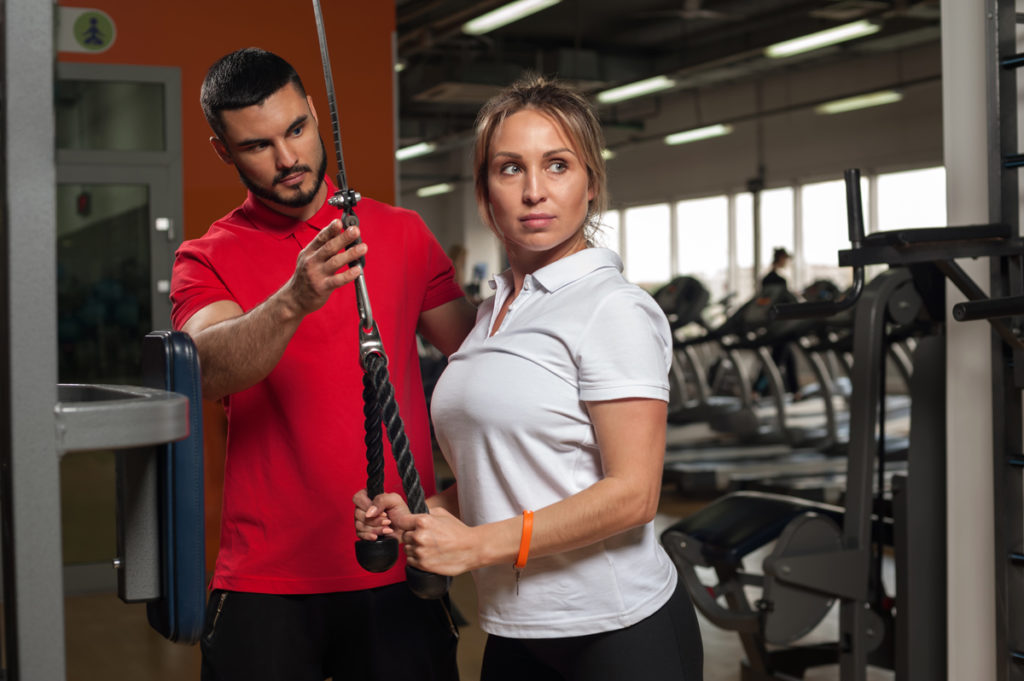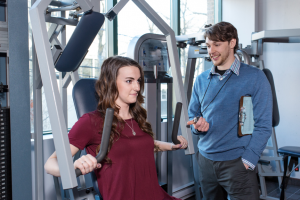Our Personal Training Studios Are Open For Business. click here to book your appointment
Strength training is safe.
This is assuming of course, that it is performed properly (see below). In contrast, a properly performed tackle in football can still cause a serious injury. Proper running form can still lead to nagging injuries due to repetitive strain. Basketball has the most injuries of all sports according to the following list: Forbes – Most hazardous sports. A properly performed chest press, even when performed with a very high level of intensity, has very little risk associated with it. In my experience as a fitness coach, I have encountered more individuals who’ve rolled their ankle walking and strained their backs gardening than strength training in a controlled environment.

This is said not to deter anyone from enjoying sport and activity, as there are plenty of benefits from both. I partake in a few activities that may even be considered risky to some (indoor climbing, adventure hiking, trail sprinting). I am comparing strength training (ST) with other activity and sports specifically to outline the lingering idea that it may be too dangerous for some demographics to partake.
Some feel that having a young girl or an older, unfit man (as examples) lift weights or perform some other form of ST is too risky. It is very likely that a young girl/boy would also be involved in some kind of team sport like soccer or ice hockey. The older, unfit man/woman may very well be hitting the tennis court or golf course one or two times per week. The forces generated during these activities far exceed the forces that occur during a properly performed ST session. Here’s the kicker, ST will actually help to prevent injuries in sports and activities. On top of that, it actually enhances athletic performance. Overall, the benefits far outweigh any inherent risks involved with proper ST.
Although there appears to be a slight shift in the general fears regarding potential injury with ST, mostly due to the growing evidence surrounding the importance (necessity) of it, there are some who still have lingering concerns. And rightly so. ST can be dangerous if you don’t know what you’re doing.

The solution then is to learn to perform ST properly, in a manner that still produces the benefits that you are looking for. The other alternative is to hire a trainer who can coach and monitor you on the perfect form so that the risk of injury is almost negligible.
I overheard one of our clients speaking the other day about their upcoming sporting event in the summer. It was something to the effect of “I want to stay in shape for the event, and I want to ensure I don’t flare up my back in the process. I can’t practice the sport as much as I’d like because of my back, and this (strength training) keeps my conditioning up and I’m not afraid of hurting myself while I do it”. I thought: “Bingo. That’s what we’re aiming for.”
Anyone can perform ST safely. All it requires is some basic understanding of what causes injuries in the first place. This can be boiled down simply to how slowly you move (the slower the safer), and your body position when performing the exercises. There are other things to consider (such as how you breathe) but these are the most important aspects, in my opinion.
Here are a few ST safety tips to help you get started:
- Lift and lower the weight slowly (no faster than 8 seconds up and 8 seconds down)
- Practice any unfamiliar exercise with a very light weight before you try and push yourself
- When possible use well designed machines over free or body weight exercises **especially when self-training
- Work with a partner (or fitness coach) who can watch and spot you while you train
- Aim for discomfort (or “burning”) in the working muscles / Avoid pain
- Avoid distractions while training: (music, people talking, TV, phone, etc.)
- Hire a trainer to teach you proper technique
I’ll also direct you toward this link which has some great resources on ST and safety.

If you have any questions on how to get started we are only a phone call away (902) 405-3661. If you have specific questions regarding the safety and benefits of strength training I’d be happy to answer your questions personally.
You can email me at: matt@oneupfitness.dgstesting.com
Thank you for reading.
Matt
Copyright © 2025 One Up Fitness and H-cube Marketing | All Rights Reserved. |


